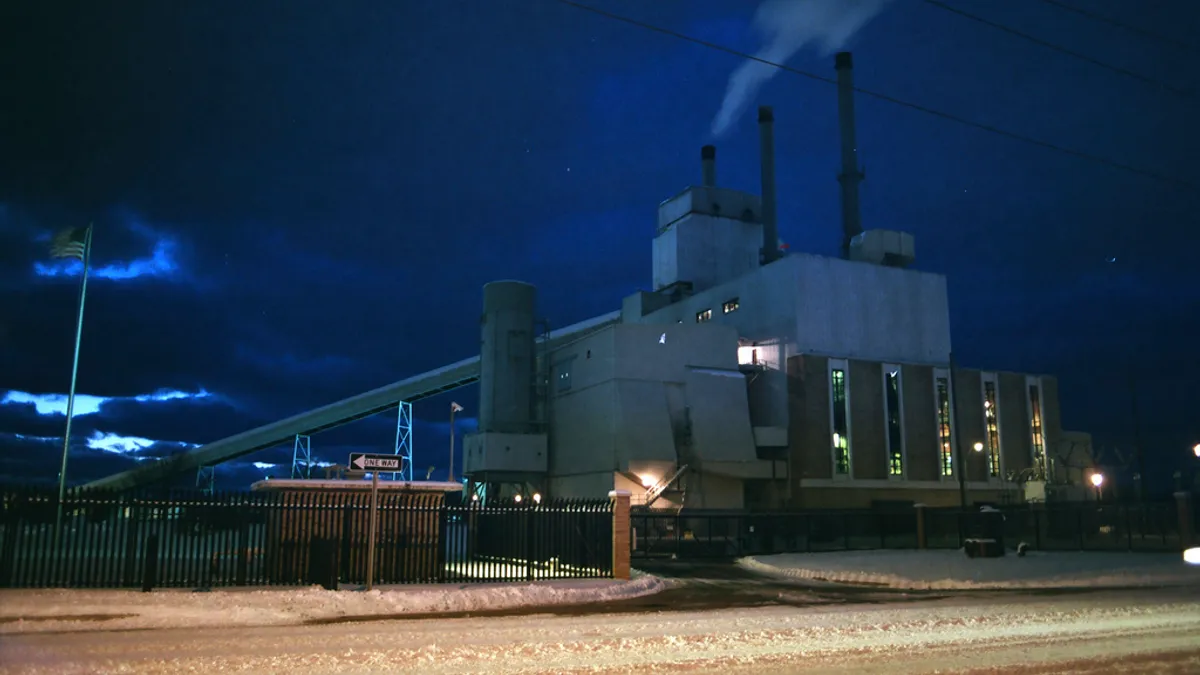Dive Brief:
- The U.S. Department of Energy's cost recovery proposal could cost consumer billions down the road, according to a new Sierra Club analysis, who noted operations and maintenance costs for merchant nuclear and coal in the four wholesale markets that could be affected by the rule added up to $14 billion in 2016.
- Earlier this month, IHS estimated the proposal could cost consumers nearly $4 billion annually. Secretary of Energy Rick Perry has argued that costs are not the primary concern, and asked a House subcommittee last week, "what's the cost of freedom?"
- DOE at the end of September finalized a Notice of Proposed Rulemaking that would provide full cost recovery for merchant coal and nuclear plants with 90 days of fuel supply onsite in an attempt to keep the baseload plants online and operating.
Dive Insight:
New analysis of Perry's proposal to fundamentally alter power markets suggests the plan could stick consumers with billions in extra costs in exchange for grid reliability that is only fractionally improved, according to the Sierra Club.
The environmental group debated the notion that power plants with 90 days of fuel on site are needed for reliability, saying "this has almost never been an actual real-world problem." In a statement, the group said that disruptions of power supply due to "fuel supply emergencies" represented just 0.00007% of the power outages reported from 2012-2016, primarily due to a coal plant in Northern Minnesota.
“The price tag of Rick Perry’s outlandish directive to FERC is becoming clear now, and it’s more catastrophic than we originally thought," said Mary Anne Hitt, Director of Sierra Club's Beyond Coal campaign. "Perry is essentially demanding America’s manufacturers, small businesses, and families pay what will likely be billions in higher bills to hedge funds and big banks that made a bad bet on coal, to bail out uneconomic power plants."
Sierra Club's analysis examines the operations and maintenance costs for all merchant coal and nuclear plants in the four markets subject to Perry’s proposal, which include ISO-New England, ISO-New York, PJM Interconnection and possibly the Midcontintent-ISO. The group said those costs amounted to $14 billion, according to 2016 estimates.
But those estimates could be off if MISO does not fall under the rule's scope. Perry narrowed the rule to only include RTOs and ISOs with active "energy and capacity markets." MISO has a voluntary capacity market, making it unclear how the rule would be applied there.
According to the group, owners of the most coal plant capacity that would benefit from the DOE NOPR include FirstEnergy, NRG, and Dynegy. Sierra Club estimates around 100 coal and nuclear plants could be subsidized by the Trump administration's proposal, primarily in the Mid-Atlantic and Midwest.
The rulemaking and its short 60-day timeframe has sparked widespread anxiety in the power sector, with former FERC regulators warning the proposal could "blow up" wholesale power markets. Initial comments are due to FERC next week.
Perry testified last week before the House Energy and Commerce Subcommittee, arguing that cost impacts of the proposal should be "secondary" to ensuring grid resilience in emergency situations.
"I think you take costs into account, but what's the cost of freedom? What is the cost to build a system to keep America free? ... the idea that there is a free market in the energy industry is a fallacy,” he said.















